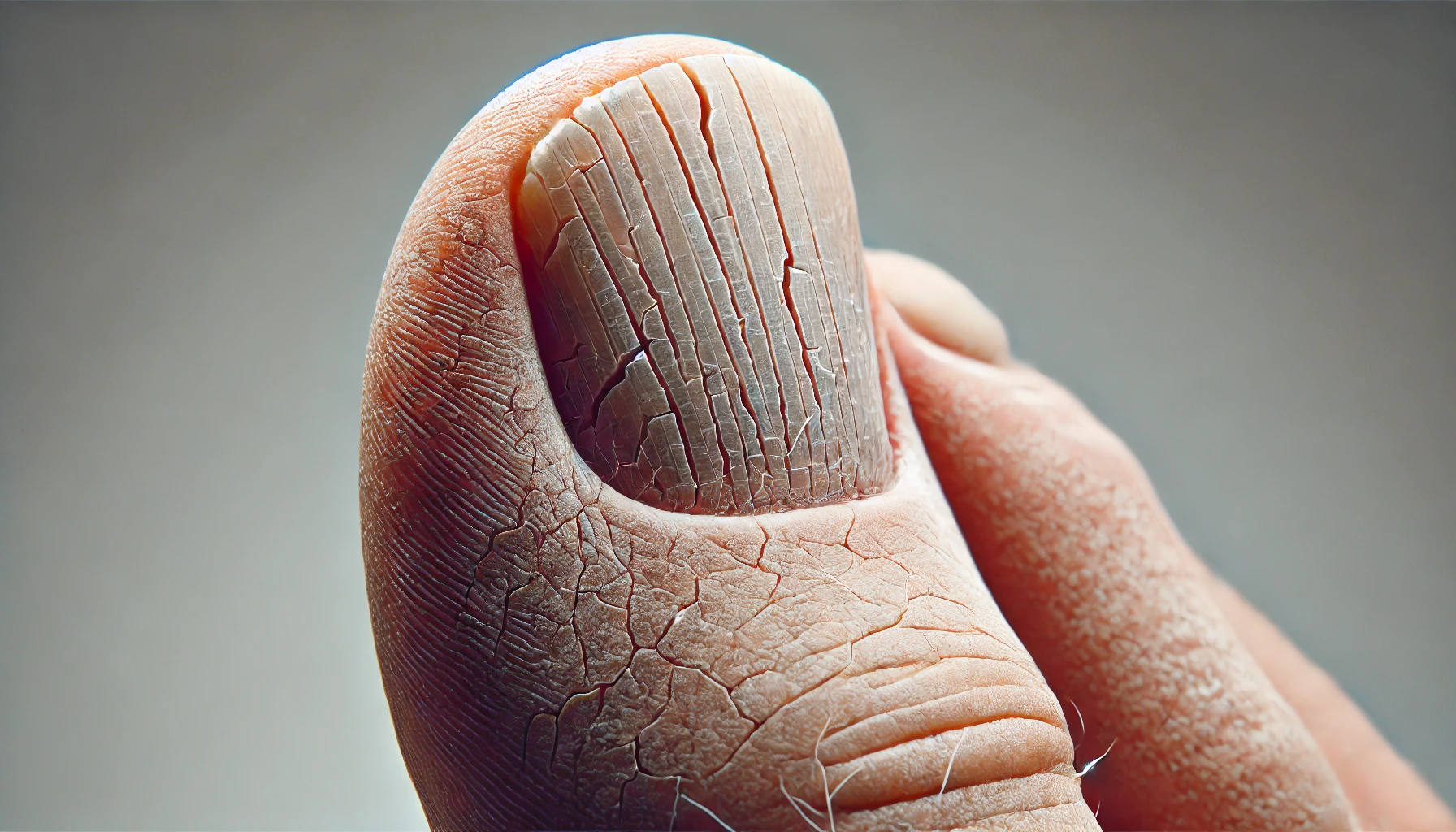Health Notice: This article was written using the Consensus AI Academic Search Engine. It is intended solely for informational purposes and should not be considered medical advice. Always consult a licensed healthcare provider for diagnosis, treatment, or medical guidance. Please refer to the full Disclaimer at the end of this article.
Onychorrhexis is a condition characterized by longitudinal ridging and splitting of the nails. It is a common nail disorder that can affect both fingernails and toenails. The term “onychorrhexis” is derived from the Greek words “onycho,” meaning nail, and “rhexis,” meaning rupture or splitting.
Causes and Risk Factors
Onychorrhexis can be caused by a variety of factors, both internal and external. Some of the common causes include:
- Aging: As people age, their nails can become more brittle and prone to splitting.
- Nutritional Deficiencies: Lack of essential nutrients such as biotin, iron, and other vitamins can lead to weakened nails.
- Medical Conditions: Certain medical conditions like hypothyroidism, psoriasis, and eczema can contribute to the development of onychorrhexis.
- External Trauma: Repeated trauma or injury to the nails, such as from manicures or exposure to harsh chemicals, can cause the nails to split.
Symptoms
The primary symptom of onychorrhexis is the presence of longitudinal ridges and splits in the nails. Other symptoms may include:
- Brittle nails that break easily
- Thin nails
- Discoloration of the nails
- Pain or discomfort if the splitting is severe
Diagnosis
Diagnosis of onychorrhexis is typically made through a physical examination of the nails. A healthcare provider may also inquire about the patient’s medical history, dietary habits, and any recent trauma to the nails. In some cases, blood tests may be conducted to check for underlying nutritional deficiencies or medical conditions.
Prevention
Preventing onychorrhexis involves taking steps to maintain healthy nails and avoiding factors that can cause damage. Some preventive measures include:
- Proper Nail Care: Keeping nails trimmed and avoiding excessive use of nail polish and removers.
- Balanced Diet: Ensuring adequate intake of essential nutrients, particularly biotin and iron.
- Protection: Wearing gloves when handling chemicals or performing tasks that could injure the nails.
- Hydration: Keeping nails and cuticles moisturized to prevent dryness and brittleness.
Conclusion
Onychorrhexis is a common nail disorder that can result from various causes, including aging, nutritional deficiencies, medical conditions, and external trauma. Recognizing the symptoms and understanding the risk factors can help in managing and preventing this condition. Proper nail care, a balanced diet, and protective measures are essential in maintaining healthy nails and reducing the risk of onychorrhexis.
Disclaimer
The content in this blog post was generated using Consensus, an AI-powered academic search engine, and is based on publicly available scientific literature. While we strive to provide accurate, up-to-date, and well-researched information, this content is intended for informational and educational purposes only.
It does not constitute medical advice, diagnosis, or treatment. Always consult a qualified healthcare professional before making decisions related to any medical condition, treatment, or medication.
The AI system’s analysis may not account for all perspectives, ongoing research, or individual circumstances, and should not replace professional expertise. Neither the blog publisher nor the developers of the Consensus AI tool are liable for any decisions or actions taken based on this content.
Use of this information is at your own risk. Where provided, citations link to original scientific studies for reference only—these should be reviewed independently and interpreted with the support of a qualified medical or research professional.
If you are experiencing a medical emergency, please seek immediate care from a healthcare provider or call emergency services.
